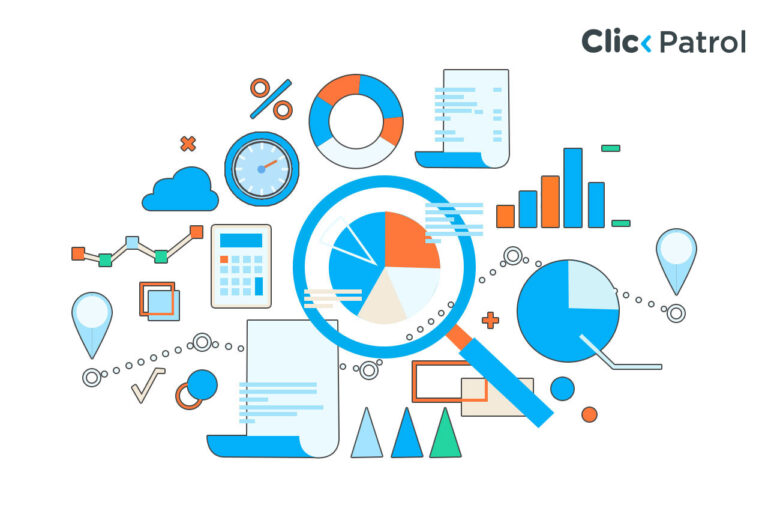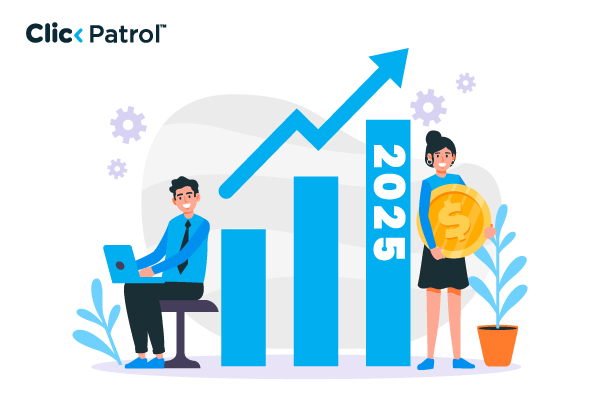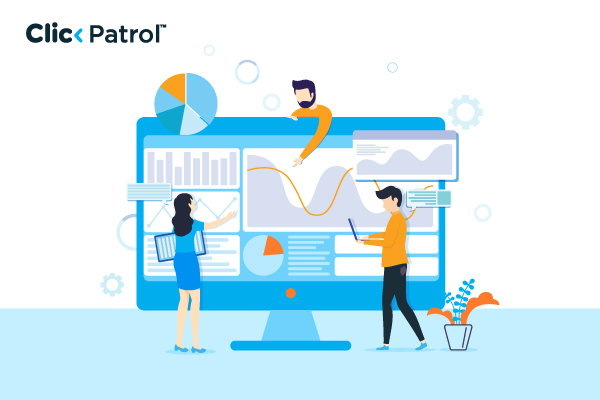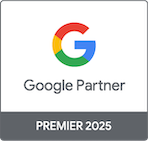
Google Analytics vs Google Ads: How to integrate & maximize your marketing ROI
Abisola Tanzako | Apr 22, 2025

Table of Contents
- Google Analytics explained: Tracking and analyzing website data
- What is Google Ads?
- Google Analytics vs Google Ads: Core differences
- How Google Analytics vs Google Ads complement each other
- Statistical Insights: Google Analytics vs Google Ads in 2025
- Which should you use: Google Analytics vs Google Ads?
- How to integrate Google Analytics with Google Ads for better insights
- Maximizing ROI with Google Analytics and Google Ads
- FAQs
Marketers who use Google Analytics and Google Ads together see a 30% higher ROI. Google Analytics dominates the web analytics industry, with 44 million websites relying on its insights. Meanwhile, Google Ads continues to thrive, generating $264.59 billion in 2024.
Understanding how these platforms work individually and in combination is crucial for achieving digital success.
This guide breaks down the differences between Google Analytics vs Google Ads, explains how they work, and guides the integration of them for optimal results.
Google Analytics explained: Tracking and analyzing website data
Google Analytics is a free web analytics service that tracks and measures website and app performance.
Since its launch in 2005 and the introduction of Google Analytics 4 (GA4) in 2020, it has provided businesses with detailed insights into user behavior.
Today, 37.9 million websites utilize Google Analytics, accounting for 55.49% of all websites worldwide.
Key features of Google Analytics
- User behavior tracking: GA4 tracks statistics such as page views, session duration, and bounce rates on mobile, enabling you to see how your users interact with your site.
- Audience insights: It segments users based on demographics, location, and interests. The U.S. uses it predominantly, with 22.9% of the world’s total usage.
- Conversion tracking: Firms can follow goals such as purchases or registrations, with GA4 tracking up to 300 events and 30 conversions per property.
- Predictive analytics: Machine learning provides predictions, i.e., likely revenue from a specific user segment.
What is Google Ads?
Google Ads provides businesses with an advertising platform to show ads through its extensive network, which includes search results on YouTube and more than 2 million websites in the Google Display Network.
Key features of Google Ads
- Targeting options: Targeted options through Google Ads enable advertisers to direct their campaigns to specific keywords, alongside user demographics, locations, and device usage, with mobile usage leading at 61.9%.
- Ad formats: Google Ads offers a range of advertising options, including search ads, display ads, and video ads on YouTube. It also features Google Shopping Ads that dominate U.S. retail search ad spending with a 76.4% share.
- Cost-per-click (CPC) Model: Google search ads typically cost $2.69 under the CPC model and achieve a 4% to 6% click-through rate (CTR).
- ROI potential: Businesses’ return on investment reaches an average of $2 for every dollar invested, resulting in a 200% increase in revenue.
Google Analytics vs Google Ads: Core differences
While both tools are part of Google’s system, their purposes differ significantly. Here’s a detailed breakdown:
1. Purpose:
- Google Analytics: Focuses on website traffic analysis and user behavior tracking.
- Google Ads: Designed for advertising and lead generation.
2. Data collection:
- Google Analytics: Tracks sessions and user interactions across a site.
- Google Ads: Tracks ad clicks and conversions tied to campaigns.
3. Cost:
- Google Analytics: Free for most users; GA360 costs $150,000 annually.
- Google Ads: Requires a marketing budget, with businesses spending between $9,000 and $30,000 per month.
4. Use case:
- Google Analytics: Best for long-term strategy, SEO, and audience insights.
- Google Ads: Best for immediate traffic, sales, and lead generation.
How Google Analytics vs Google Ads complement each other
Users find more effective results when they merge their Google Analytics vs Google Ads platforms.
Through integration, Google Analytics receives ad data for its reports, while Google Ads accesses Analytics audience data for advertising purposes.
Synergistic benefits
- Enhanced attribution: Google Ads’ attribution model relies on last-click attribution, whereas GA4 provides customers with a multi-touch attribution system. Under the default system, Google Ads receives 100% of the $100 conversion, but GA4 redirects $85 to Google Ads alongside $15 for organic search.
- Behavioral Insights: Analytics insights provide marketers with data on post-click actions, including bounce rates, which average between 40% and 60% across websites, to enhance their ad campaigns.
- Retargeting: Utilizing GA4 audiences with Google Ads retargeting techniques enables the creation of customized ad campaigns that generate higher conversion rates, up to 400% in some instances.
Statistical Insights: Google Analytics vs Google Ads in 2025
- Adoption and reach
- Google Analytics: Used by 43.35% of the top 10,000 websites and 33.65% of the top million, with 14.2 million sites on GA4.
- Google Ads: Reaches 4.77 billion internet users, with 85.3% of its clicks from Shopping Ads.
- Performance metrics
- Google Analytics: The platform Google Analytics monitors more than 200 metrics, and 83.5% of websites implement it or tools similar to it to make data-based decisions.
- Google Ads: The click-through ratio for Google Ads in 2024 stands at 6.42%, and YouTube video ads generate conversion rates 82% better than other advertisement formats.
- Cost efficiency
- Google Analytics: The free access to Google Analytics makes it the choice of 89% of English-language websites.
- Google Ads: In 2024, when users execute Google Ads, they will observe their average cost-per-click rise to $4.66 without sacrificing an 800% ROI standard.
Which should you use: Google Analytics vs Google Ads?
The choice depends on your goals:
- To Insights: To track how individuals engage with your site, use Google Analytics and optimize it organically. It is free and tracks 36% of product discovery that starts on Google.
- To optimize for budget, use Google Analytics to identify which campaigns or traffic sources offer the highest return on investment. This data can be used to allocate budgets more effectively within Google Ads.
- For growth: Power real-time traffic and sales through Google Ads, capitalizing on its 63% click-through rate.
- For advanced attribution: Leverage both tools to adopt data-driven attribution models, enabling you to visualize the entire customer journey and enhance your ad campaigns.
- Add response ads for an end-to-end ad approach, as 92% of marketers utilize responsive search ads based on Analytics insights.
How to integrate Google Analytics with Google Ads for better insights
By combining Google Analytics with Google Ads, users acquire valuable data that enables campaign optimization and behavioral analysis.
Follow these steps:
1. Both platforms require proper configuration.
- Google Ads requires an active configuration check on your account.
- The tracking system of your website must demonstrate proper installation of Google Analytics while maintaining accurate data reporting.
2. Link your Google Analytics platform with Google Ads features through the account settings.
- Sign in to Google Analytics.
- Proceed to the Admin section, select Account Settings, and finally reach Property Settings.
- Under Product Linking, select Google Ads Linking.
- Open your desired Google Ads account, then follow the linking instructions that appear.
3. Enable auto-tagging in Google Ads
- You should access your Google Ads platform.
- Open the Settings section and reach Account Settings through the menu.
- Activating Auto-Tagging through Google Ads lets the platform share campaign information with Analytics.
4. Google Analytics requires goals and conversions to be set up through its platform.
- Create business-oriented goals (such as form submissions and purchases) in Analytics to track your performance targets effectively.
- The proper setup of these conversions enables you to monitor Google Ads campaign performance better.
5. Enable data sharing
- Users can access the Account Settings within the Admin section of Google Analytics.
- The data sharing function for Google Products and Services must be enabled to achieve smooth information flow.
6. Custom campaigns should continuously be tracked with UTM parameters.
- Use manual UTM parameters and individual campaign URLs to track campaigns within Google Analytics.
7. Analyze the data in analytics
- Acquisition > Google Ads section in Analytics provides access to all the following data:
- Campaign performance.
- Keywords driving traffic.
- User behavior on the landing pages.
8. Monitor metrics and optimize campaigns
- The data about bounce rate, along with time on page and conversion rates, should guide your targeting strategy, budget planning, and landing page updates.
Maximizing ROI with Google Analytics and Google Ads
Digital marketers should unquestionably consider Google Analytics and Google Ads as essential campaign tools.
Analytics delivers deep and actionable user behavior data that has made 44 million websites rely on it for strategy development.
Google Ads drives immediate business expansion through targeted advertisements, bringing in $224 billion in revenue in 2024.
As a powerful combination, these tools blend data analytic abilities with proactive marketing to generate the highest possible return on investment.
Your ability to utilize the strengths of analytics and Google Ads effectively separates your marketing performance from competitors within the current digital marketplace.
FAQs
Q.1 Is Google Analytics free?
Yes, the basic version is free, but Google Analytics 360, which is for large businesses, ranges between $50,000 – $150,000 annually.
Q. 2 What is the average ROI for Google Ads?
Businesses typically achieve a 200% ROI, earning $2 for every $1 spent, with some campaigns yielding up to 800%.
Q. 3 Which tool is best for small businesses?
Google Analytics measures performance on a budget, and Google Ads excels at achieving rapid growth. When combined, they offer the best of both worlds.





